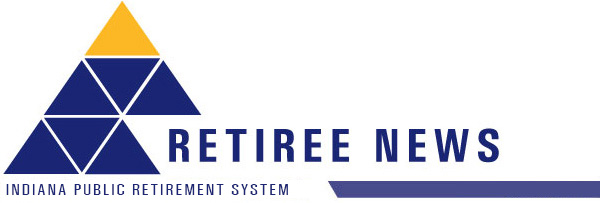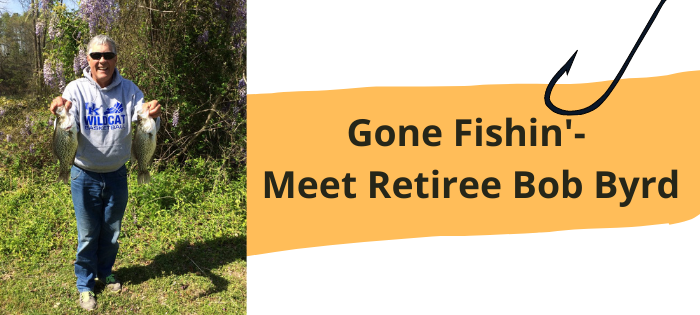

Retiree Bob Byrd started teaching in 1971 at Garrett High School. Four years later, he taught at River Forest High School for two years and then retired at age 55 from Greenfield-Central after 27 years. During his career, Byrd taught math and coached basketball after school.
Byrd and his wife have three kids who followed Byrd's footsteps by starting successful careers of their own; two of them earned both a Ph.D. and an MBA. Byrd's oldest child decided to continue his father’s career path and teaches at the Kelly School of Business at Indiana University.
Byrd is currently spending his early retirement days in Toano, Virginia, with his wife.
"I wanted to be able to fish saltwater, and the Chesapeake Bay is right here, so I kept my Boston Whaler right on the Bay. Lots of fishing for striped bass, flounder, red drum, and cobia. Two terrific reservoirs are within 15 minutes of my home: Disacund Reservoir and Little Creek Reservoir; both have tremendous fishing, and I would say they are under-fished. I find that down here, where we have lots of retirees, many talk a good game of fishing, but few are actually serious about it, and even fewer actually go fishing! Not me ... I fish both saltwater & freshwater."
Byrd's passion for fishing even landed him an article in Woods and Waters magazine. (See page 10)
Byrd's suggestions for retiring early include:
- Saving a good amount from every paycheck;
- Always paying cash for cars and then driving them at least eight years; never having car payments; and
- Investing wisely
To share your retirement story with us, email us at info@inprs.in.gov or message us on Facebook or Twitter. We look forward to hearing from you!
Beware of scams targeting you and your money
Scammers are taking advantage of the coronavirus pandemic to con people into giving up their money. During this time of uncertainty, knowing about possible scams is a good first step toward preventing them. Visit https://www.consumerfinance.gov/coronavirus/avoiding-scams/ to stay safe against scams that could target you.
Source: Consumer Financial Protection Bureau
Find out when you can expect your benefit payment from INPRS
Mark your calendars for your 2022 benefit payment dates.
TRF | PERF |
Monday, January 3, 2022 | Friday, January 14, 2022 |
Tuesday, February 1, 2022 | Tuesday, February 15, 2022 |
Tuesday, March 1, 2022 | Tuesday, March 15, 2022 |
Friday, April 1, 2022 | Thursday, April 14, 2022 |
Friday, April 29, 2022 | Friday, May 13, 2022 |
Wednesday, June 1, 2022 | Wednesday, June 15, 2022 |
Friday, July 1, 2022 | Friday, July 15, 2022 |
Monday, August 1, 2022 | Monday, August 15, 2022 |
Thursday, September 1, 2022 | Thursday, September 15, 2022 |
Friday, September 30, 2022 | Friday, October 14, 2022 |
Tuesday, November 1, 2022 | Tuesday, November 15, 2022 |
Thursday, December 1, 2022 | Thursday, December 15, 2022 |
1099s arrive in January
1099s will arrive in your mailbox and online any time after Jan. 31, 2021. Pay special attention to Box 7 of your 1099 to ensure it is appropriate for your situation. If the “early distribution-no known exception” box is checked and you believe there is an exception, please consult your tax advisor.
Understanding the fees you pay if you still have a DC balance with INPRS
If you’re like us, you’re eager to see the changes to your investment performance when you get your quarterly statement. When you review your statement, take note of the administrative and investment fees INPRS is required to add. While no one likes to pay fees, it’s important to understand what fees you are paying and why. We’re committed to only assessing the fees that are necessary for taking care of your account. INPRS does not profit from administrative fees. In fact, our fees are among the lowest you’ll find.
INPRS members pay two types of fees – an administrative fee and an investment fee (referred to as an expense ratio). Below we sum up what you need to know about administrative fees and expense ratios:
Administrative Fees | Expense Ratios/Investment Fees |
|
|
You can use the below equation to figure how many dollars you’re paying annually in fees:
Amount Invested (dollars) x Expense Ratio (%) = Fee
For example: if you have $10,000 in a fund with an expense ratio of 0.12%, you’ll pay $12 per year in fees.
View your investment options and their associated expense ratios by logging into your secure online account at www.myINPRSretirement.org.
* The above example assumes a $1,000 annual investment for 10 years at year-end, starting at age 30 and investing until age 65. Both scenarios assume an 8.00% gross return with an INPRS return of 7.90% net-of-fees and a competition return of 7.53% net-of-fees. The rate of return is an assumption and is not a guarantee of performance.
Updated Tax tables may impact your deposit
2021 Comprehensive Annual Financial Report
Social Security Announces 5.9 Percent Benefit Increase for 2022
Social Security and Supplemental Security Income (SSI) benefits for approximately 70 million Americans will increase 5.9 percent in 2022.
The 5.9 percent cost-of-living adjustment (COLA) will begin with benefits payable to more than 64 million Social Security beneficiaries in January 2022. Increased payments to approximately 8 million SSI beneficiaries will begin on December 30, 2021. (Note: some people receive both Social Security and SSI benefits). The Social Security Act ties the annual COLA to the increase in the Consumer Price Index as determined by the Department of Labor’s Bureau of Labor Statistics.
Read more at https://www.ssa.gov/news/press/releases/2021/#10-2021-2
Source: Social Security Administration
Resources That Can Help You with Jumps in Energy Prices This Winter
Home heating costs are forecast to go up this winter due to rising fuel prices and increased demand. The prediction comes from a recent report of the Energy Information Administration.
Many energy prices dropped considerably last winter due to a sharp drop in demand brought on by the COVID-19 pandemic. But the agency said prices have since rebounded, partly because of the economic recovery, and in some cases have reached multi-year highs.
If you’re impacted by this price increase and could use assistance in paying your winter heating bills, help is available. The Energy Assistance Program (EAP) can help you pay your heat and electric bills. EAP is a federally funded program through the U.S. Department of Health and Human Services (HHS) called the Low-Income Home Energy Assistance Program (LIHEAP). For more information, visit https://www.in.gov/ihcda/homeowners-and-renters/low-income-home-energy-assistance-program-liheap/. There, you can find how to get support, no matter what utility you receive service from.
Source: Indiana Housing & Community Development Authority
